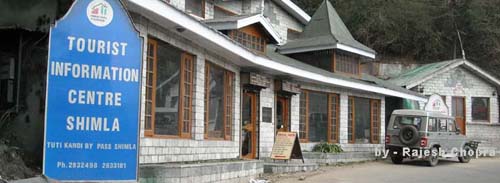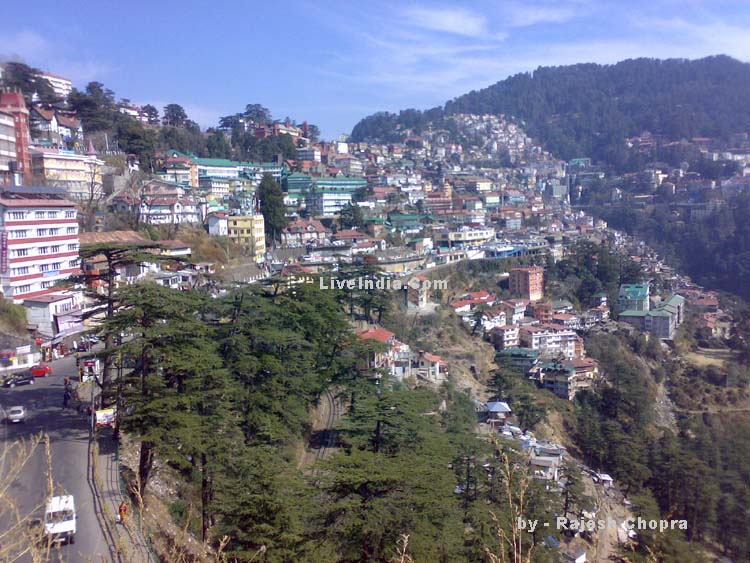
| |
Shimla Hill Station
Shimla
Combining the awesome
and the beautiful, Himachal Pradesh to mind the poetic imagery of Kalidas,
Goethe who translated KallidalS, and Milton who wrote "Paradise Regained".
Here roamed Gods of Hindu trilogy, Siva and Parvati with their host of
elves goblins; this was the abode of demi-gods-the Yakshas, Kinnaras and
Gandharvas. Here now live the romantic, carefree in one of the most beautiful
states at the foot of the King of Mountains-Himavat.
With lush green forests,
bubbling streams emerald meadows, enchanting lakes and eternal snows, it
nestles in the lap of Mother
ature. Leaving behind
the hot steamy plains at either Kalka or Pathankot, the tourist starts
his odyssey of delight as he rise into the cooler climes above. Taking
the 'toy train' from Kalka the holiday begins then and there, as the train
winds its way through the mountains stopping at lovely stations built in
the style of Swiss chalets upto the later day Olympus. Shimla, the peak
encircled summer seat of the British Viceroy with its green meads of hyacinth
and celandine surrounded by solemn forests of deodar and towering pine.
Now the proud capital of the state, it retains, still, the glory of its
past splendours; racing, golf and cricket still prevail, while the Mall
is agog with elegant shops, splendid hotels and bustling, gay cosmopolitan
crowds that give the appearance of being on perpetual holiday.
Indeed, Shimla has everything
to gladden the heart of any traveller twelve months of the year. Here,
too, are places like the famous Wild Flower Hall, one time home of Lord
Kitchener, Commander-in-Chief of the British Army in India and lovely Craignano
built by an Italian nobleman, where one can relive Shimla's Imperial past.
We have attempted, in
this book, the almost impossible task of detailing the delights of Shimla
with its fabulous past, where to go, how to get there, where to stay and
what to buy.
"Among the immovables,
I am the Himalayas" says Lord Krishna in the Gita. This book is dedicated
to those who believe in that maxim |
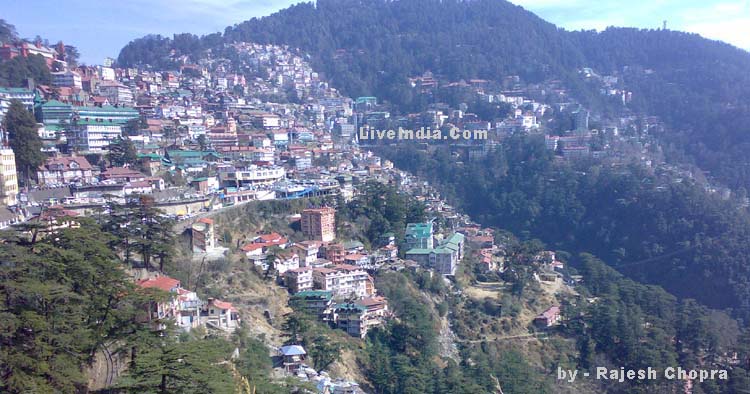
SHIMLA
-Imperial Arbiter of
India's Destiny -
From stately Windsor
Castle where the "Widow of Windsor" reigned in lonely, isolated splendour
after the death of her beloved consort, ! Prince Albert, to the small,
but ancient temple surrounded by thick woods where the Himalayan Goddess,
Sham la, a 'synonym of Kali, reigned her celestial realm on earth is indeed,
distant cry, but for well over a century, the two places, almost inter-linked,
ruled the destiny of this sub-continent. In the year 1818, when Queen Victoria's
uncle, William IV, was King of England, Lord William Bentick, the Governor
General, had transformed the Company's dominion in India to the Dominion
of India, and it was accurate to speak of Britain's Indian empire. The
frontier ran from Bengal to Kathiawar, to the north it ran through the
Thar desert and along the Sutlej nearly to the Himalayan range. The great
hills were the northern boundary except for the Gurkha state of Nepal.
Beyond this line lay the Punjab, Kashmir and the kingdom of Atqhanistan.
In 1814, the Nepalese
king brought about the first war with Nepal over Sikkim, the Gurkhas had
marched into Sikkim, whose ruler appealed, to the East India Company for
help. The Sikkim ruler was installed and his territorial status was guaranteed
but during the conflict the British
discovered the beauties
of Darjeeling and accidentally also the thickly wooded spot, abode of the
goddess Sham la, and a part of the Kingdom
of Nepal. When war broke
afresh in 1819, the British took the place with its cool and, healthy climate.
Here was installed a village of tents, where the heat-weary British civil
and military officers came to rest in the arduous process of empire building.
Here they recouped from fatigue and went anew into battle. The year 1822
was an eventful one in the history of the salubrious spot-a young officer,
Major Kennedy, built the first permanent residence for himself-it is still
there.
Hillsmen continued to
worship the wooden image of the goddess, never dreaming what lay in store
for them or their upretentious little village. WorShippers of Shakti, they
built small temples dotting the hill sides, peaks, ridges and valleys,
which began to be known by the name of the goddess herself, like Taradevi,
Sipur, Mahasu, etc. In due course the image was removed and enshrined in
a wooden structure where is the present site of the Kalibari. Later, a
marble image from Jaipur replaced the old: Queen Victoria ascended the
throne in 1837- but for the Sikhs, who were to last another ten years,
dominion was complete. The court etiquette was very rigid and proper under
the stiff rules imposed by the young queen.
Young officers who did
not behave were banished to India from where they invariably found their
way to Shimla which had begun to thrive. Banished from the strict life,
at court, they began to built themselves a substitute life, but without
the attendant rigid impositions against revelry. Life begun to a gay round
of sport, riding and long picnics, the hung, followed by a gay party and
impromptu dance. The goings on, were kept from the Queen but more girls
began to be interested in taking the boat to India.
|
 |
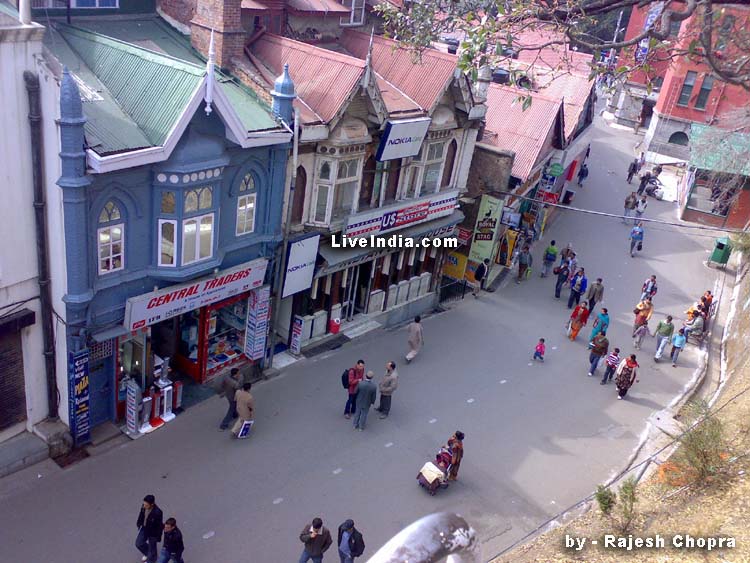
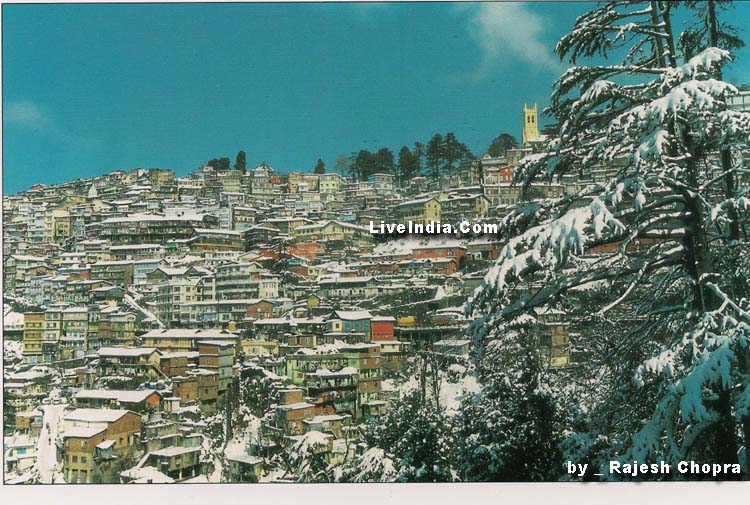
|

